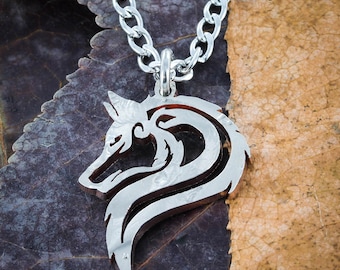

In White Heaven in Hell (1974), the Wolf and Cub face a new peril when Yagyu clan leader Retsudo employs his bloodthirsty daughter to destroy them once and for all. This duty leads him into a confrontation with the evil Retsudo (Minoru Ohki), as well as forcing him to turn against the very clan he is supposed to be protecting. In Babycart in the Land of Demons (1973), Lone Wolf is hired by the Kuroda clan to protect the destiny of its succession. A rescue is effected, but Itto must also carry out his latest assignment to kill tattooed martial arts mistress Oyuki (Michie Azuma). In the fourth film, Babycart in Peril (1972), the Wolf has become separated from his Cub, who has fallen into the hands of Itto's deadly rival. On the road again, the Wolf finds his services in demand, as he and the child travel a violent path to Hades. In Babycart to Hades (1973), the Lone Wolf shows a rare streak of compassion when he rescues a young girl from her pimp. Beyond them, Lone Wolf must defeat the Gods of death in order to win his 500 pieces of gold. The Yagyu clan are determined to see him dead, and send the deadly female assassins, the Akashi after him. In Babycart at the River Styx (1972), Itto - aka 'Lone Wolf' - continues his bloody quest through the land he calls Hell.

Accompanied only by Daigoro, he sets out on a trail of vengeance against the secret society that murdered his wife and poisoned his reputation. In Sword of Vengeance (1971), executioner Ogami Itto is framed for treason and declared an outlaw. Viewed by many as the pinnacle of Japanese exploitation cinema, the films chronicle the adventures of disgraced Shogun assassin Ogami Itto (Tomisaburo Wakayama) and his son Daigoro (Akihiro Tomikawa), who sell their services as assassins while continuing their bloody quest for revenge against the hit squad who killed Itto's wife. All seven films in the Lone Wolf and Cub Japanese samurai action series.


 0 kommentar(er)
0 kommentar(er)
